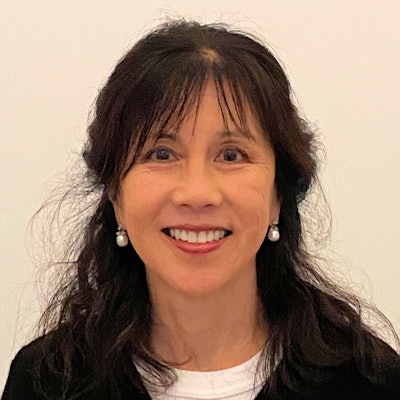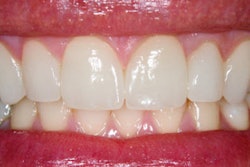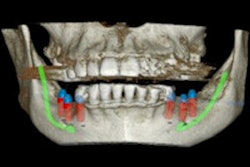
Has your office compressor or washing machine ever suddenly stopped working? So, you find yourself in front of the machine, flashlight in hand, trying to find the model or serial number. Then, you are speaking to customer service to schedule a repair or, worse yet, scrambling to buy a new compressor.
 Teresa Yang, DDS.
Teresa Yang, DDS.Now, think about a similar situation involving a patient with a shattered implant crown. You don't know the type of implant the patient has, you can't remember when it was implanted, and whether you even did the work. The patient gives you the names of his previous dentists, the ones he can recall, and your staff begins the time-consuming process of trying to determine the implant's exact specifications.
You may use an online resource to radiographically identify the implant or ask an oral surgeon for his or her expertise. Oftentimes, it's a dead end.
If you're lucky, your sleuthing helps you identify the implant and its size, and you obtain the necessary impression coping, analog, and screwdriver needed. However, there are other issues. You still have no idea what type of abutment is underneath the crown.
In the worst case, you come up empty handed and treat the implant as if it were a real tooth. You drill off the crown, pack cord, and fabricate a new crown. You know that packing cord around an implant is difficult and may disturb the vulnerable implant and soft-tissue interface, almost certainly resulting in an inferior restoration.
This exhaustive process needed to be changed, so that's what I did. When I placed a crown for a patient, I also gave the person a document that included the following:
- Tooth number
- Implant manufacturer, type, and dimensions
- Description of the abutment, like custom semiprecious metal
- Photograph of the abutment on the model showing adjacent teeth
- Description of the crown, like zirconia
- Name of the surgeon who placed the implant
- Dates of implant and crown placement
Keep this in mind
If the patient were getting an artificial hip, similar information would be entered into a national database. Data such as performance metrics and trends also would be monitored and analyzed. Until such time that dentistry establishes a national implant registry, we are on our own to take steps to make the implant replacement process simpler.
Some patients appreciated this handout. Others occasionally said, "Why do I need this? You have my records."
Then, I would compare an implant to a new car, for which there is a database that keeps track of its year, make, and model. This is really the same thing. After my explanation, I would smile and say, "You know, things happen. Just keep this with your other important papers."
Other tips
When possible, I chose screw-retained crowns. With cementable crowns, I ask the laboratory to place a white or brownish dot of porcelain over the access opening to mark the location in case the crown and abutment need to be removed in the future.
I have considered asking patients to purchase spare impression coping and lab analogs in the event the manufacturer goes out of business, gets acquired, or decides to stop supporting the implant and stocking spare parts. If the implant were in my own mouth, I would want to have these items.
If the patient presented with an implant from an unrecommended discount company, I doubly wanted them to invest in spare parts. But I held back, knowing the patient selected this implant in the first place to save money.
If the restoration was in the aesthetic zone and the patient had a custom screw-retained provisional or a flipper, I would put the temporary in a box and present it to them like old jewelry. I suppressed my ruthless minimalist side and said, "Hang on to this. You might need it one day, and it'll save you a few dollars." Sometimes the patient would give me a weird look, like I was handing them dirty socks.
A little goes a long way
That's OK. In a relationship-based practice, doing these little things matter. These extra services will distinguish you from the practitioner down the street or the beckoning dental service organization.
As a dentist, you need to anticipate and think for the patient because they can't possibly predict such outcomes. The patient also invested a significant amount of money in an implant and restoration under the assumption that it will last a lifetime.
That's what we all hope. But, sometimes, things happen.
Teresa Yang, DDS, graduated with distinction from Stanford University and cum laude from the University of California, Los Angeles (UCLA) School of Dentistry. She started two practices from scratch -- and sold them both. She has also worked as a clinic group director and a fixed prosthodontics instructor at UCLA. Dr. Yang currently serves on the California Dental Association Foundation Board. She can be reached by email at [email protected].
The comments and observations expressed herein do not necessarily reflect the opinions of DrBicuspid.com, nor should they be construed as an endorsement or admonishment of any particular idea, vendor, or organization.



















